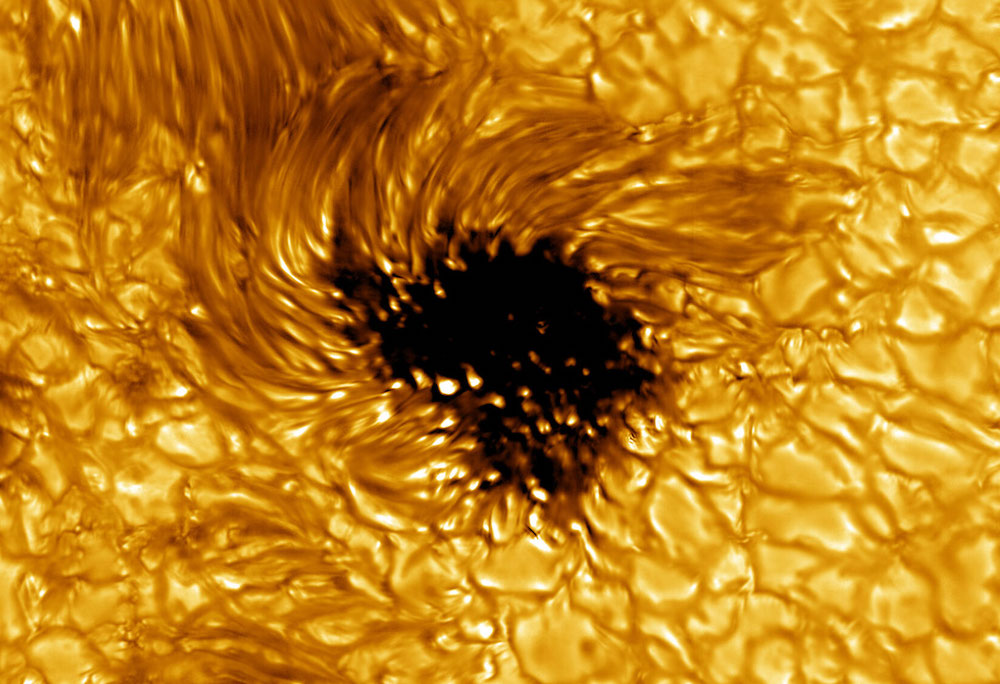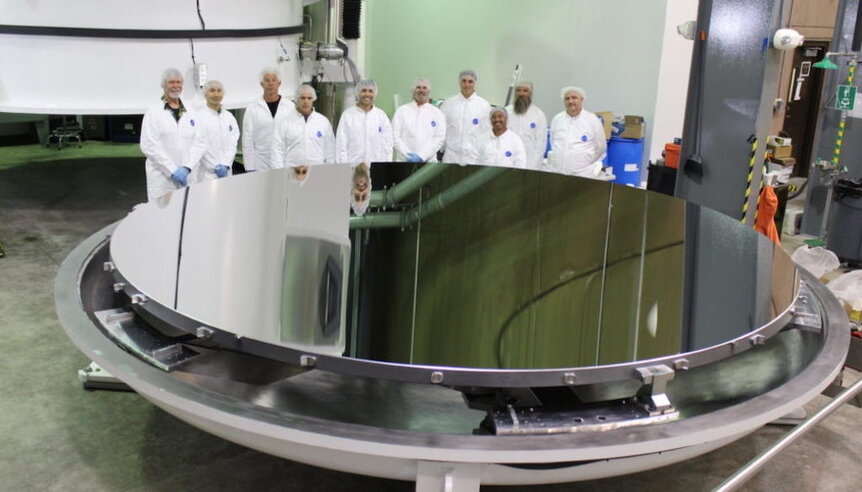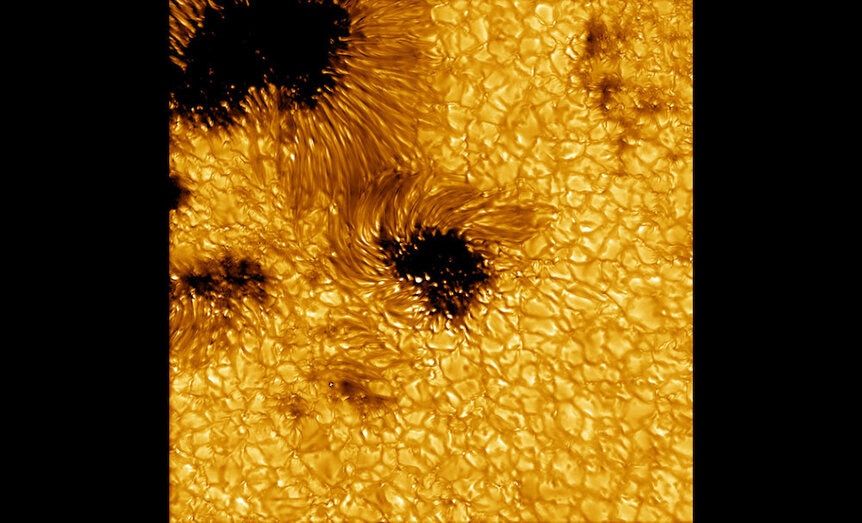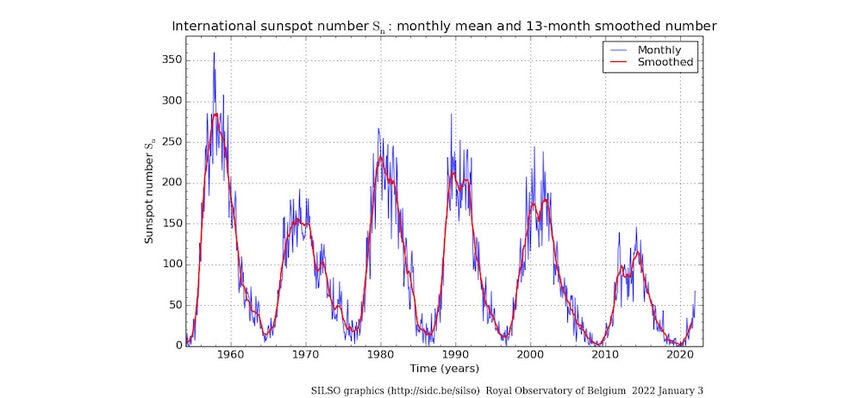Create a free profile to get unlimited access to exclusive videos, sweepstakes, and more!
DKIST, our biggest eye on the Sun, is ready to bring the science
And here's a phenomenal sunspot image to prove it.

The Daniel K. Inouye Solar Telescope is now open for business. And by "business" I mean SCIENCE.
The DKIST (as those in the know call it) is the world's largest telescope dedicated to looking at the Sun: It uses a massive 4-meter mirror to observe our nearest star! Mind you, looking at the Sun with your eyeball is a bad idea, and even using binoculars is a great way to boil your vitreous humor, so using a huge telescope may seem like a bad idea.
But it's not! First of all, a bigger telescope has higher resolution, meaning it can see more detail on the Sun's surface, so that's good. Also, the light is split between several different scientific instruments, so the Sun can be monitored in many ways simultaneously and in real-time. The real problem is dumping all the heat generated, but they have that covered, too.
The "first light" image — generally the first official observation a telescope makes — for DKIST was in January of 2020, and it showed jaw-dropping detail in the Sun's surface. That, and a subsequently released dramatic image of a sunspot, were taken during the testing phase of the telescope, running it through its moves to make sure everything was working. This includes calibrating the instruments — making sure they're tuned correctly, performing well, and returning reliable measurements — and that can take a while.
But that's all been done, and the observatory is now taking scientific observations. In honor of this, an image taken during the shakedown has just been released, and yegads.
WOW.
Taken in May 2021, I believe this shows Active Region 12822, a small sunspot group that was pretty much the only one on the Sun on that day. It was a tempestuous group, sending out multiple small solar flares as it crossed the Sun's face. At its largest, right around when the above image was taken, the sunspot covered a staggering 570 million square kilometers, roughly the same as the surface area of our entire planet. Yet that's considered small as far as sunpots go. Yikes.
The power of DKIST is in the details of the images; features as small as 20 kilometers wide can be seen. Considering the Sun is 150 million km away, that's really impressive.
The timing on this is good, too. The Sun goes through an 11-year cycle of activity, strengthening to a peak and then dipping to a minimum after about 5.5 years, and it's just starting to ramp up again after the last quiet period.
This means the Sun's magnetic field is currently strengthening. Inside the Sun is a huge layer where hot ionized gas called plasma rises to the surface, cools, then falls back down inside, a process called convection. Moving plasma generates a magnetic field, so each one of these immense convective towers has a magnetic field embedded in it. Sometimes the field lines get tangled up, and when the hot plasma reaches the solar surface the tangled lines prevent it from sinking again. It cools, and becomes darker than the plasma around it, so we call that area a sunspot. It's actually still extremely hot and bright; it just looks darker next to the somewhat brighter material around it.
A vast amount of energy can be stored in those field lines, too. Sometimes one gigantic loop tangles with another, and they short circuit. The lines snap, and the energy is released: a solar flare. These emit a lot of light and sometimes even have enough energy to create X-rays. A big flare can pound an Earth-orbiting satellite with high-energy radiation. This can dislodge electrons in the metal of the satellite, creating a huge wave of highly accelerated electrons that can short out a satellite's electronics unless it's hardened against such an onslaught. This has happened in previous flares, and satellites have been lost due to them.
Coronal mass ejections are also magnetic phenomena, which occur higher off the surface. These are much larger in size and energy than a solar flare, but nearly invisible. Instead, their energy goes into accelerating charged particle over a vast area of the Sun, sometimes up to a billion tons worth, which then flies away from the Sun at tremendous speed. They carry their own magnetic field with them, and if that hits Earth and connects with our own magnetic field, it can create powerful electric currents in Earth's crust. These in turn induce a current in our power lines, which can overload and destroy them. This cascades across the electrical grid, which then can blow out big transformers, which are very expensive and difficult to make. That means blackouts, sometimes over large areas and for a long time. Read about one such event in Quebec in 1989, and then about a CME that just missed us in 2012, to understand why these are so dangerous.
And that's why I cheer on observatories like DKIST. The Sun is the source of light and heat and power for our planet, but it's also a star, a huge and sometimes violent beast that can throw huge blasts of energy our way when it's active (and sometimes, even more terrifyingly, when it's not). Our modern society depends critically on electronics and electricity generation, both of which can be blown away by a big storm. In my mind, this is the single biggest astronomical threat we face, far more important and proximate than an asteroid or comet impact.
The more we understand about our Sun, the better.






























